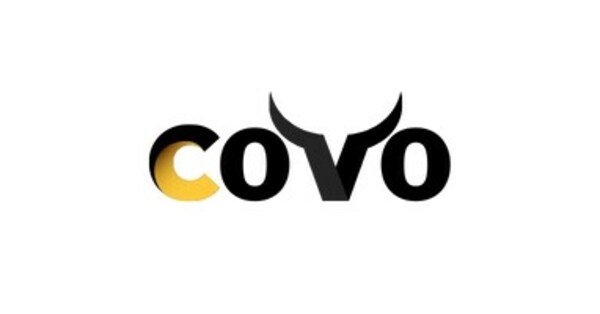
NEW YORK, March 7, 2023 /PRNewswire/ — Covo Finance is a decentralized trading platform that allows users to trade popular cryptocurrencies such as Bitcoin (BTC), Ethereum (ETH), Polygon (MATIC), and others directly from their cryptocurrency wallets. It allows users to trade perpetual futures with up to 50x leverage, similar to how it’s done on centralized exchanges. However, unlike centralized exchanges, users keep custody of their assets using a cryptocurrency wallet.
Polygon, formerly Matic Network, is a layer-2 scaling solution for Ethereum that aims to improve scalability and usability for decentralized applications. Thanks to its low fees and fast transaction times, Polygon (MATIC) has quickly gained popularity among developers and traders alike. Ethereum (ETH), on the other hand, is the second-largest cryptocurrency by market capitalization and is widely used for smart contracts and decentralized applications.
With the addition of these two cryptocurrencies to Covo Finance’s platform, traders can now access even more profit opportunities. Leveraged trading allows traders to amplify their gains (or losses) by borrowing funds to increase their exposure to an asset. For example, a trader with $1,000 in their account could trade up to $50,000 worth of the cryptocurrency using 50x leverage.
Easily Trade Top Crypto with Leverage with Covo Finance
To start trading crypto with leverage, users must connect their cryptocurrency wallet to the Covo Finance platform and deposit funds. Users can then select the asset they want to trade and choose their desired leverage level. The platform supports a variety of cryptocurrencies, including Polygon (MATIC), Ethereum (ETH), USDC, BTC, and others.
Earn Up to 70% APR on MATIC and ETH by Depositing to COVOLP Pools
COVOLP is a token representing a share of the liquidity pool on Covo Finance, from which traders can borrow for their leverage trading. By staking COVOLP, stakers can earn 70% of the trading fees generated by the platforms and additional rewards in COVO tokens.
To mint COVOLP, users must first provide liquidity by depositing MATIC, ETH, or USDC to receive COVOLP tokens in return based on their pool share.
Next, COVOLP holders must approve and stake their COVOLP tokens in the dashboard. The APR for staking COVOLP depends on several factors, such as the fees earned by the platform and COVO tokens inflation. According to Defillama, the current APR for staking COVOLP is around 67%.
Step-by-Step Guide for Crypto Margin Trading with Covo Finance
Covo Finance also includes various features to help traders stay informed and make informed decisions. The platform includes:
- Real-time market data.
- Charting tools.
- Various technical indicators help traders analyze market trends and make informed trades.
Opening a position at Covo Finance is straightforward. Traders need to click “Long” or “Short,” depending on which side they want to open a leverage position. A long position earns a profit if the token’s price goes up and makes a loss if the token’s price goes down. A short position earns a profit if the token’s price goes down and makes a loss if the token’s price goes up.
After selecting their preferred position, users must key in the amount they want to pay and the leverage they want to use. For instance, 0.1 ETH worth $352.33 is used to buy a 5x ETH (Ethereum) long position of $1752.89. The “Entry Price” is $3541.17, and the Liquidation Price is $2903.76.
The trading fee to open a position is 0.1% of the position size, and there is a 0.1% fee when closing the position. There are no price impacts or slippage for opening or closing trades as Covo Finance uses decentralized oracles for asset prices which is the aggregate price of Major Exchanges.
Managing positions on Covo Finance is also straightforward. After opening a trade, users can view it under their Positions list. They can also click “Edit” to deposit or withdraw collateral, which allows them to manage their leverage and liquidation price. When a user opens a position or deposits collateral, a snapshot of the USD price of their collateral is taken. So, for example, if a user’s collateral is 0.1 ETH, and the price of ETH is $3523.30 at the time, then their collateral is $352.33 and will not change even if the price of ETH changes.
A user’s profit and loss will be proportional to their position size. If, for instance, $352.33 is used to buy $1752.89 worth of ETH, and the price of ETH increases by 10%, the position would have a profit of $175.29. If the price of ETH decreases by 10%, the position will lose $175.29.
If a short position is opened instead, and the price of ETH decreases by 10%, the position would profit $175.29. However, if the price of ETH increases by 10%, the position would lose $175.29.
Covo Finance’s platform is designed to make leveraged trading more accessible and user-friendly. The platform is decentralized, and trades are executed on a peer-to-peer basis. Decentralization reduces the risk of hacking or theft, as funds are not held in a central location.
Adding Polygon (MATIC) and Ethereum (ETH) to Covo Finance’s platform is a significant development for the decentralized trading ecosystem. It gives traders even more opportunities to profit from the growing cryptocurrency market while offering a user-friendly and secure platform for leveraged trading. However, traders should be aware of the risks associated with leveraged trading and use caution when executing trades.
Media Contact:
Company: Covo Finance
Email: [email protected]
Website: https://covo.finance
Logo: https://mma.prnewswire.com/media/2017634/Covo_Finance_Logo.jpg
SOURCE Covo Finance
